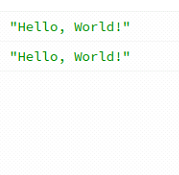
 Data Structure
Data Structure Networking
Networking RDBMS
RDBMS Operating System
Operating System Java
Java MS Excel
MS Excel iOS
iOS HTML
HTML CSS
CSS Android
Android Python
Python C Programming
C Programming C++
C++ C#
C# MongoDB
MongoDB MySQL
MySQL Javascript
Javascript PHP
PHP
- Selected Reading
- UPSC IAS Exams Notes
- Developer's Best Practices
- Questions and Answers
- Effective Resume Writing
- HR Interview Questions
- Computer Glossary
- Who is Who
How to break JavaScript Code into several lines?
We can break JavaScript code into several lines by using the backslash () at the end of the line. This tells the JavaScript interpreter to continue reading the next line as part of the same statement. Additionally, we can also use parentheses, brackets, or curly braces to create multiple lines of code within a single statement. This helps to make the code more readable and easier to maintain. Let us first understand what code splitting is.
Code Splitting
Code splitting is a technique used in web development to load only the necessary code for a specific page or component, rather than loading an entire application at once. This can improve the performance and load times of a website or application. Code splitting can be done manually or using a tool such as webpack.
The main benefit of code splitting is that it reduces the initial load time and improves the overall performance of the application. It also allows for easy lazy loading of content.
Approach
JavaScript code can be broken into several lines using the line continuation character, which is a backslash () at the end of the line.
Here is an example ?
let longString = "This is a long string that needs to be \ broken into several lines.";
Alternatively, you can use parentheses, brackets, or template literals to span your code over multiple lines without using the line continuation character ?
let longString = ( "This is a long string that needs to be " + "broken into several lines." ); let longString = `This is a long string that needs to be broken into several lines.`;
Example
Here's an example of breaking JavaScript code into multiple lines ?
// This is a single line of code
console.log("Hello, World!");
// This is the same code, but split into multiple lines
console.log(
"Hello, World!"
);
In the second example, the console.log statement is split into multiple lines. This is useful for making the code more readable and easier to understand. The console.log statement takes an argument, which is the string "Hello, World!". By wrapping the string in parentheses and placing it on a new line, we can clearly see that the string is the argument being passed to the console.log function.
You can also use backslash () to break the code into multiple lines, for example ?
console.log("Hello, " + \
"World!");
It will work the same as the above example.
Note that in JavaScript, semicolon insertion is a feature that automatically adds semicolons to the end of lines, so you don't have to worry about forgetting to add them when breaking code into multiple lines.
Output


